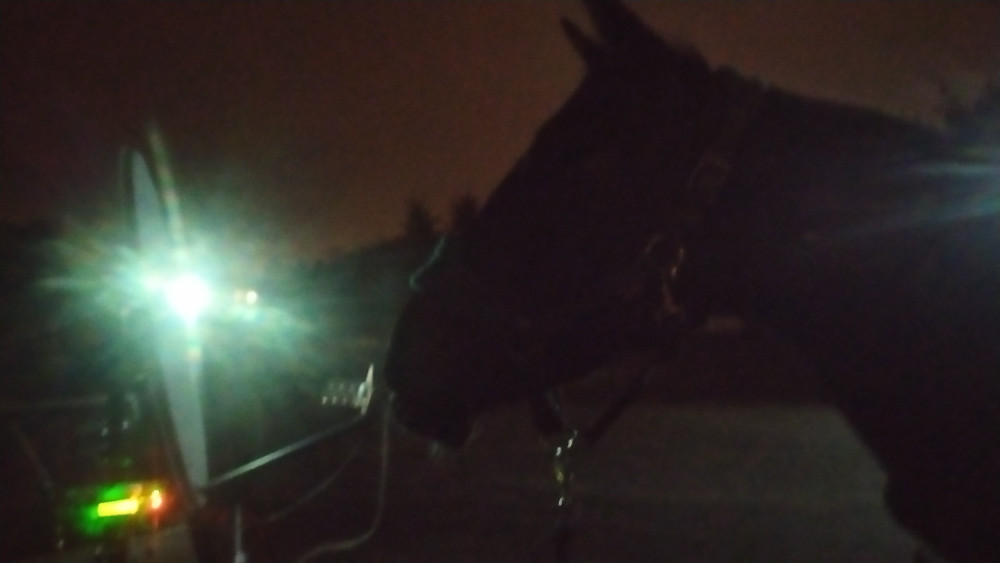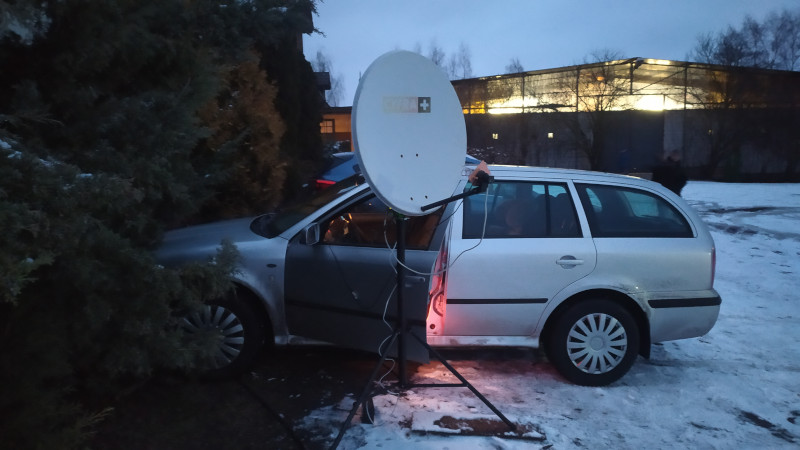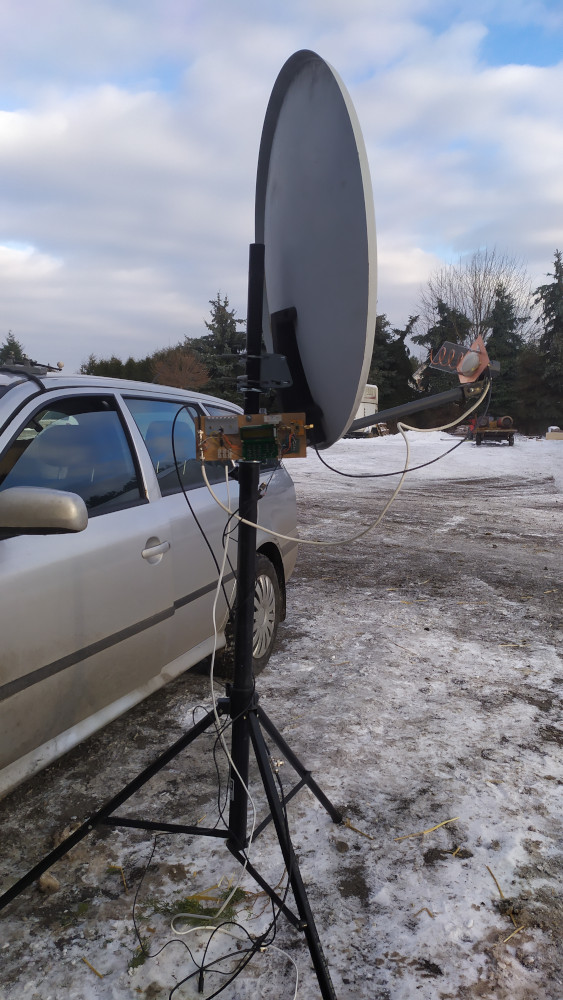One of my new year’s resolutions for 2021 was to make some contacts via the QO-100 satellite.
This would normally require equipment like an ADALM-PLUTO or other transmit-capable SDR, transverter, power amplifiers etc. This is necssesary for SSB and other modes, but for CW it should be much easier and cheaper.
Fortunately a simple CW transmitter can be made from cheap modules. Reception can be done via a cheap satellite LNB with the IF feeding a cheap SDR receiver tuned to 739MHz, and transmission using a cheap signal generator, a small power amplifier module and a simple keying circuit.
A suitable signal generator can be bought for about 15-20 euro from auction sites (aliexpress, ebay etc, search for “adf4351 signal generator”). This model can generate 35MHz-4GHz, with 10kHz steps at 2.4GHz.
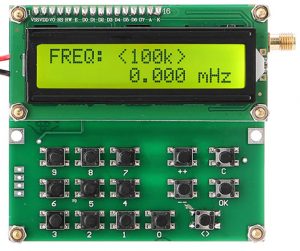
This generator outputs around -3dBm at 2.4GHz. In the above photo 100k is the step (this can be changed via the <> button), the frequency can be incremented/decremented via the ++ and — buttons. Use the keyboard to enter the desired frequency (like 2400030) and press OK.
This is then fed into a SKY65135 power amplifier module, which can be also bought for about 15-20euro from auction sites (aliexpress, ebay etc, search for “sky65135”). Some of these modules are labeled “Novate”.
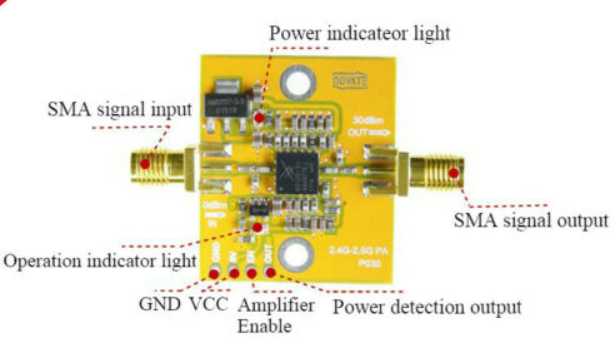
This module has a lot of gain, so it will easily generate over 500mW when fed from the signal generator. The EN (amplifier enable) pin, will be used to key the transmitter (normally this would produce key clicks, but it’s not much of a problem at these power levels). The OUT (power detector output) ping will be used to connect a small meter for a visual indication that the transmitter is working correctly.
All we need now is a simple keying circuit (with sidetone) and a 5V source. The while circuit is presented here:
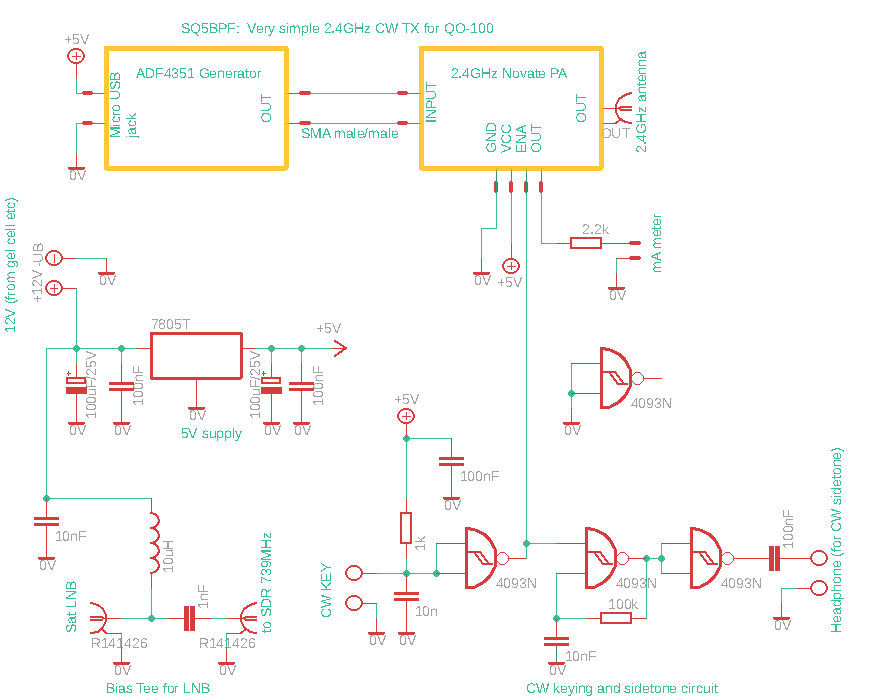
Since i wanted to get on the air quickly, the construction is ugly. All was assembled on a wooden board (not the best material for microwave construction).

The 5V power supply leads are soldered to the USB jack on the generator module. The bias tee can use almost any coil, most LNBs put out a signal which is too big anyway.
Antenna
For the antenna i use a discarded 80cm satellite TV offset dish (given to me by Rafał SP5WPK), and a dual-band feed with a satellite LNB for 10GHz and helical feed for 2.4GHz. This was described by Mirek SP5GNI here: https://hf5l.pl/en/eshail-2-or-qo-100-for-beginners/
The reflector is made from a 11x11cm piece of double sided PCB board. The cut is 45mm from the side.
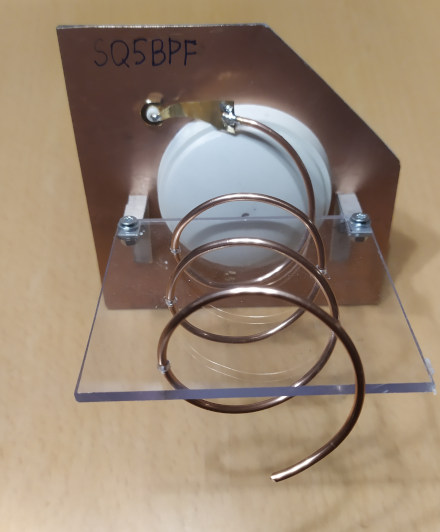
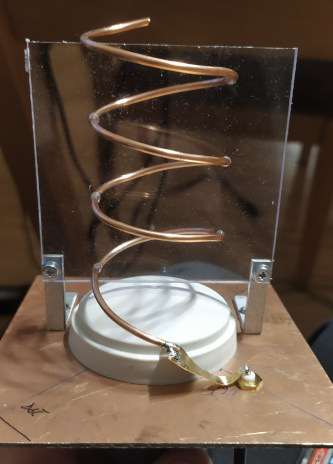
The helical antenna can be tuned to SWR 1.3 by bending the trapezoidal plate.
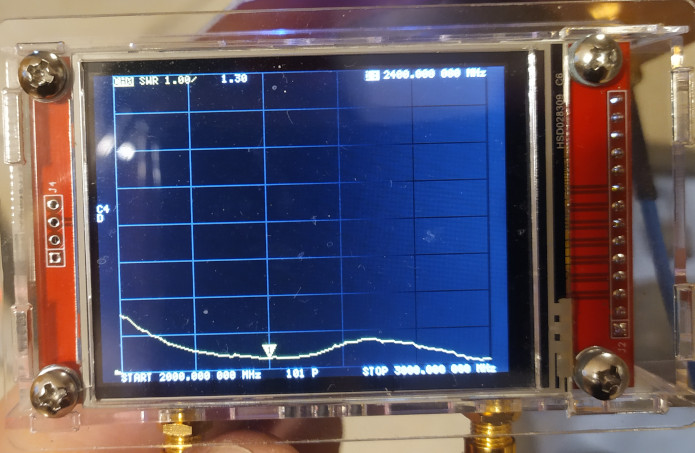
The LNB is a Sharp BS1K1EL100A PLL LNB fitted with a 25MHz TCXO. Other PLL LNBs (even without a TCXO) might be even better.
Most of these LNBs give a very high output signal, for the Sharp converter it is best to connect a 10dB attenuator before the SDR receiver. A 739MHz bandpass filter also helps to improve the S/N ratio.
The 739MHz receiver uses a standard rtl-sdr usb stick, and gqrx under linux (other software, under other operating systems can also be used).
The generator signal is stable enough for CW. This is a recording from the BATC QO-100 Narrowband SDR:
Unfortunately i don’t see the geostationary orbit from my home, so i need to have a mobile station. So I bought a mobile stand for another 15 euro. Power is supplied via a 12V 7Ah SLA battery, operation is from a car. Hard to send CW when the key is on the car roof and the temperature is below freezing 🙂
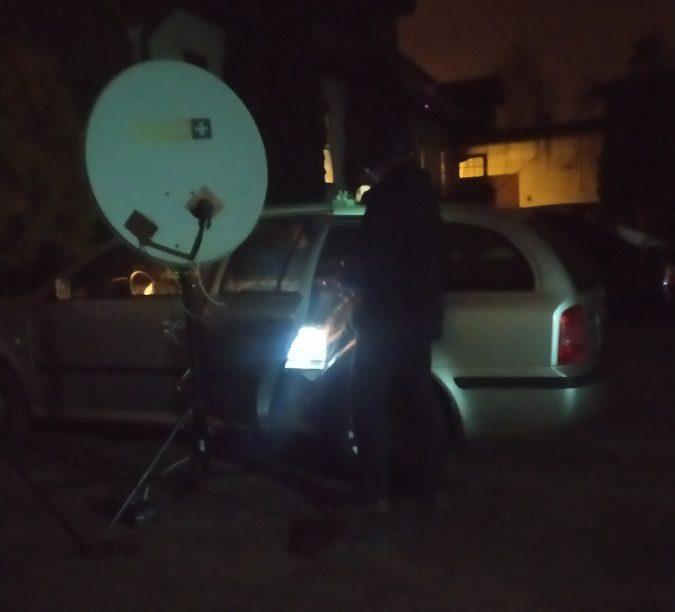
A horse inspects the QO-100 antenna:
